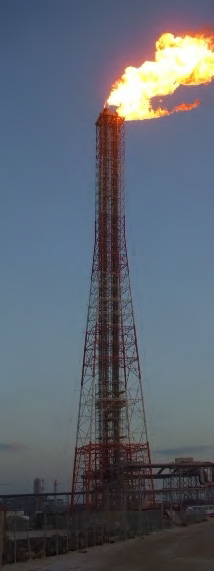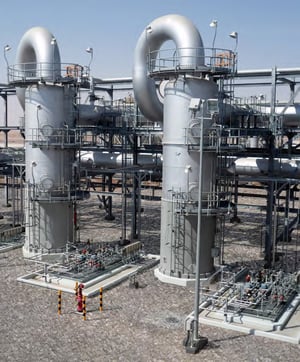Solutions for Minimizing the Impact of Subpart Ja for Flare Systems
CATEGORIES:

Flares play a critical role as a safety device in refineries, and most oil and gas producing and processing facilities. Flares provide a safe, effective means for the destruction of Volatile Organic Compounds (VOCs) and other gases during plant emergencies, upsets or even during normal operating conditions. Historically, the flare has served as the vapor “sewer” for the facility, collecting and burning all of the unwanted gases and system leakage.
In recent years some refinery owners and operators decided to recover the potentially high heatvalue gas existing in their flare systems due to normal operations, in lieu of burning the gas in the flare. Flare gas recovery, they determined, offered some real and tangible benefits. Recovered flare gas could be re-used in plant process heater burners and boiler burners, which in turn reduced the amount of natural gas purchased by the facility. Purchasing less gas provided a fairly short return on investment for the cost of the flare gas recovery system. If the flare tip happened to be an assist-type, employing flare gas recovery also reduced the consumption of steam or air while increasing the life of the flare tip by reducing the amount of gas being continuously burned by the flare. Flare gas recovery provided some intangible benefits, as well. By reducing the amount of gas in the flare, the visibility of the flare itself was minimized, improving public perceptions of the facility.

Deep Liquid Seal Systems: Modifications to Improve Flare Gas Recovery Economics
Ensuring a reasonable system back pressure is crucial when installing a Flare Gas Recovery unit. Zeeco recommends the application of a deep seal drum to achieve this. Zeeco’s deep seal drums were developed after years of extensive research and development to offer an advanced design that improves FGR efficiency and ensures the flare operates without pulsation or surging—issues that are common with standard liquid seal drums. Zeeco also can provide existing systems with a new drum, or in some cases, retrofit another manufacturer’s drum to accommodate our seal internals.
In addition to increasing the efficiency of the FGR operation, Zeeco’s deep seal drum provides a higher level of safety in the overall system design. Should the turndown control on the Flare Gas Recovery system malfunction, the compressors could potentially begin pulling a vacuum on the flare header. A deeper seal drum will allow a greater amount of vacuum to be pulled before the seal is broken and air can enter through the flare tip (causing an explosion hazard). This provides a longer amount of time for the turndown issue to be fixed or the system shut down before any safety hazards occur.
Conclusions
Subpart Ja regulations will continue to impact the U.S. refining industry for the next several years. While some refineries already have implemented the necessary changes to comply with these regulations, other facilities are farther behind and run the risk of incompliance when the final November 2015 date is reached. Although these regulations may not be as complicated as other EPA regulations, Zeeco continues to experience end-user confusion in the industry about the necessary changes needed at each facility. Zeeco’s recommendation is to always choose an experienced flare and flare gas recovery expert to best understand the impact these regulations will have at each facility.
Download Technical Paper